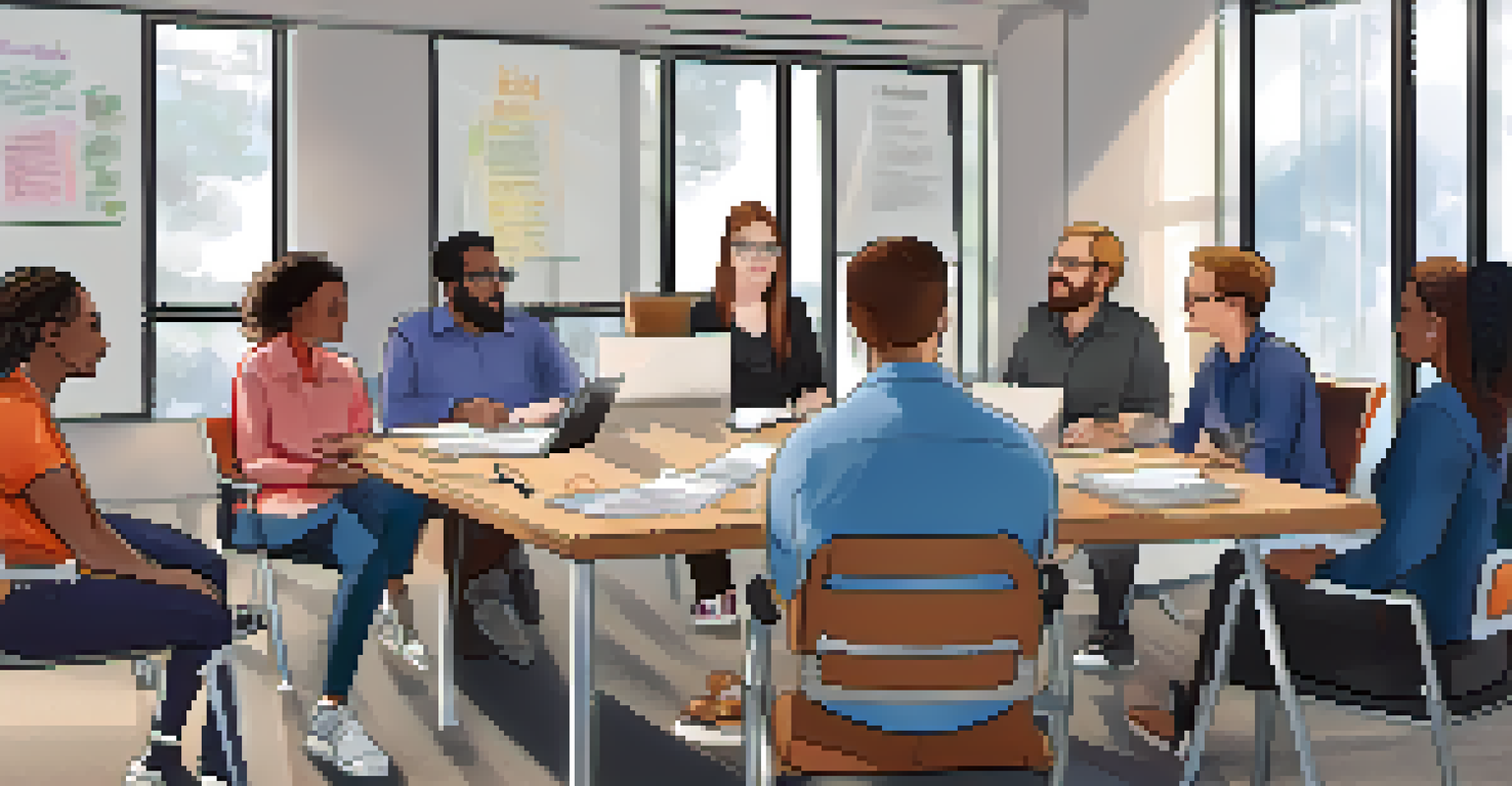The Influence of Disability Narratives on Culture and Media

Understanding Disability Narratives in Society
Disability narratives refer to the stories and perspectives shared by individuals with disabilities. These narratives play a crucial role in shaping societal perceptions and attitudes toward disability. By sharing personal experiences, disabled individuals can challenge stereotypes and promote understanding.
Disability is not a brave struggle or courage in the face of adversity. Disability is an art. It's an ingenious way to live.
In many cultures, disability has been historically stigmatized, often resulting in isolation and misunderstanding. However, as more people share their stories, the narrative is slowly changing. Disability narratives empower individuals and encourage society to view disability through a more empathetic lens.
As these stories gain visibility, they contribute to a broader cultural shift that values diversity and inclusion. This evolution in narrative helps break down barriers and fosters a sense of community among those with disabilities and their allies.
The Role of Media in Shaping Disability Narratives
Media is a powerful tool in shaping public perceptions of disability. From films and television shows to social media platforms, the way disability is portrayed can either reinforce stereotypes or promote understanding. Positive representation in media can lead to greater acceptance and appreciation of diversity.

For example, when popular TV shows feature characters with disabilities in nuanced, relatable roles, it helps normalize their experiences. This visibility allows audiences to see disabled individuals as multifaceted people rather than just their disabilities. Such representation can inspire conversations and challenge preconceived notions.
Empowerment Through Disability Narratives
Personal stories shared by individuals with disabilities challenge stereotypes and foster empathy in society.
Moreover, social media has given rise to a new wave of disability advocates who share their stories directly with the public. This grassroots movement allows for authentic narratives that resonate with audiences and drive change. By amplifying these voices, media can significantly influence societal attitudes toward disability.
Impact of Literature on Disability Representation
Literature has long served as a vessel for exploring complex themes, including disability. Through novels, essays, and poetry, authors can delve deeply into the lived experiences of individuals with disabilities. This exploration often fosters empathy and understanding among readers.
The only disability in life is a bad attitude.
Books like 'The Curious Incident of the Dog in the Night-Time' and 'Wonder' offer insights into the lives of characters with disabilities, encouraging readers to empathize with their struggles and triumphs. These narratives not only entertain but also educate audiences about the diverse realities faced by disabled individuals.
Furthermore, literature allows for the exploration of intersectionality, where disability intersects with other identities like race, gender, and sexuality. This complexity enriches the narrative, making it more relatable to a broader audience and highlighting the multifaceted nature of the human experience.
Art as a Medium for Disability Advocacy
Art plays a vital role in advocating for disability rights and representation. Artists with disabilities use their creative talents to express their experiences, challenge societal norms, and engage audiences in meaningful dialogue. Through various mediums, including visual arts, performance, and installations, these artists convey powerful messages.
For instance, contemporary art installations that explore themes of accessibility can provoke thought and inspire change. By presenting disability in innovative ways, artists challenge viewers to reconsider their perceptions. This artistic expression fosters a sense of community and solidarity among individuals with disabilities.
Media's Role in Representation
Accurate and positive portrayals of disability in media can transform societal attitudes and promote greater acceptance.
Moreover, art can serve as a platform for collaboration, bringing together artists of all abilities to create inclusive works. Such initiatives not only highlight the importance of diverse voices but also promote understanding and acceptance within society as a whole.
The Influence of Disability Activism on Media Narratives
Disability activism has significantly influenced the narratives portrayed in media. Activists advocate for accurate representation and challenge harmful stereotypes, pushing for more authentic portrayals of disabled individuals. Their efforts have led to increased visibility and a shift in how disability is discussed in public forums.
Campaigns like #NothingAboutUsWithoutUs emphasize the importance of including disabled voices in conversations about disability rights and representation. This grassroots activism has prompted media outlets to reconsider their approaches and include more diverse perspectives in their content.
As a result, we are witnessing a gradual transformation in the media landscape, with more inclusive storytelling becoming the norm. This shift not only benefits disabled individuals but also enriches the media by offering a wider range of narratives that resonate with various audiences.
Challenges in Portraying Disability in Media
Despite progress, challenges remain in accurately portraying disability in media. Misrepresentation and stereotypes continue to persist, often overshadowing authentic narratives. This can lead to harmful misconceptions that affect societal attitudes and the treatment of individuals with disabilities.
For example, when films depict disability as a tragedy or focus solely on the struggle, they fail to capture the richness of disabled individuals' lives. Such portrayals can reinforce negative stereotypes and limit public understanding. It’s crucial for creators to approach disability narratives with sensitivity and a commitment to authenticity.
Art as a Voice for Advocacy
Artists with disabilities use their work to express experiences and spark meaningful conversations about representation.
Ultimately, addressing these challenges requires collaboration between creators, advocates, and individuals with disabilities. By fostering open dialogue and promoting diverse storytelling, we can work toward more accurate and empowering representations of disability in media.
The Future of Disability Narratives in Culture and Media
The future of disability narratives in culture and media looks promising, as awareness and advocacy continue to grow. With the rise of social media and digital platforms, individuals with disabilities have more opportunities to share their stories and influence public perception. This democratization of storytelling empowers diverse voices and encourages greater representation.
As society increasingly values inclusivity, we can expect to see more authentic portrayals of disability across various media forms. From film to literature, the narratives will likely shift towards celebrating the experiences and contributions of individuals with disabilities, rather than merely highlighting their challenges.

Moreover, ongoing collaborations between creators and disability advocates will further enrich the narrative landscape. By working together, they can ensure that disability is represented in a way that resonates with audiences and fosters understanding. This collaborative approach will pave the way for a more inclusive cultural narrative.